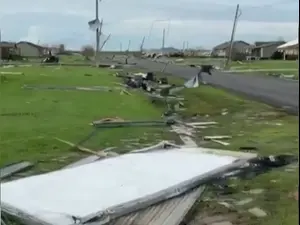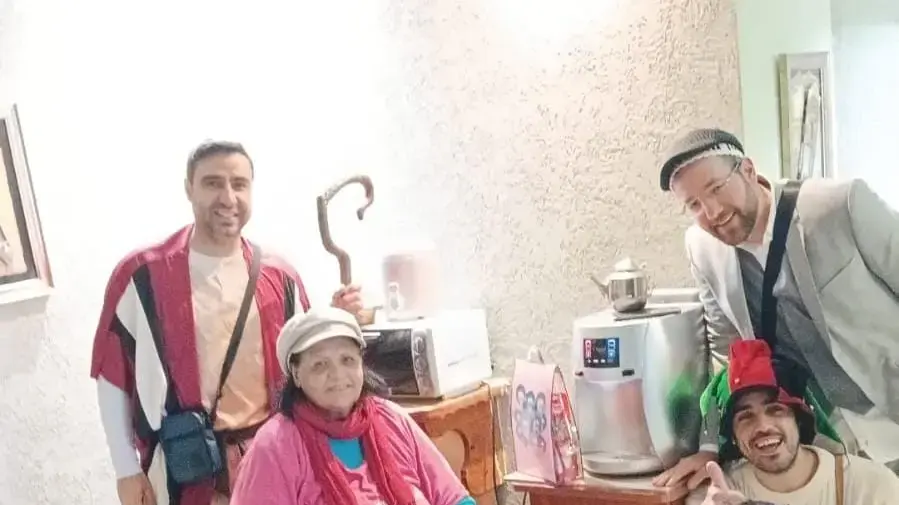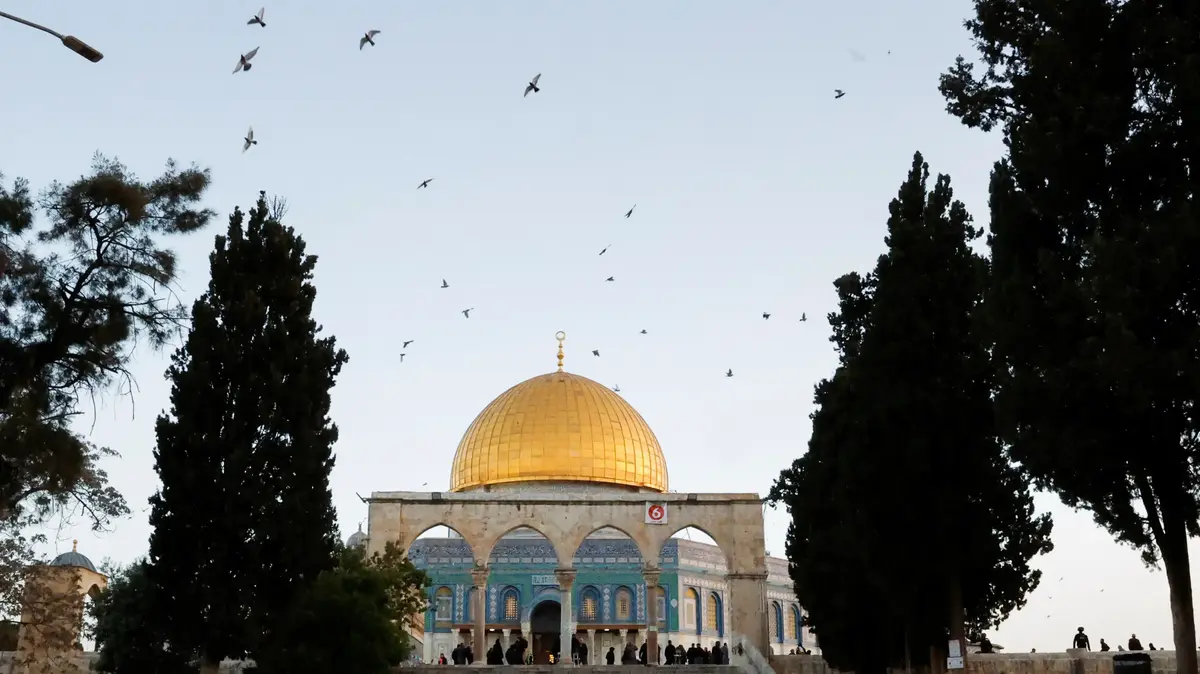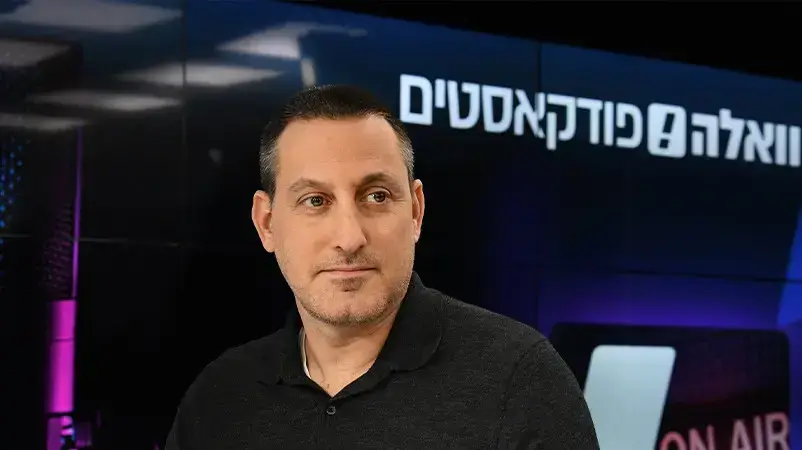- news
Within 5 years: The number of students studying the Israeli program in East Jerusalem has doubled
About 12,000 students from the east of the city are expected to study the Israeli program this year, compared to 9,000 last year. Authorities are encouraging and pushing for a transition from the Palestinian curriculum, and residents are forced to choose between maintaining their identity and being able to advance and integrate into Israeli academia. "The population is between a rock and a hard place"
Tags- East Jerusalem
- Ministry of Education
- Jerusalem city council
- the Palestinian Authority
Maya Horodnitsano
Tuesday, 25 August 2020, 08:45- Share on Facebook
- Share on WhatsApp
- Share on general
- Share on general
- Share on Twitter
- Share on Email
A wave of IDF attacks in the Gaza Strip; a barrage of rockets was fired at ...
"Destruction everywhere": 6 killed by Hurricane Laura damage ...
Clashes between security forces and settlers during evacuation ...
Elections abstained: Knesset approves law rejecting approval ...
Japanese Prime Minister Shinzo Abe has resigned due to the situation ...
A border fighter was lightly wounded by a marble board thrown at him in clashes ...
Trump: "No one will be safe in Biden's US" ...
Tensions in the south: Fires broke out in several areas in the Gaza Strip ...
Towards the start of the school year: Netanyahu and Galant visited ...
Corona outbreak in Gaza village: 17 patients, 140 in isolation ...
Documentation of the area from which Hezbollah's attack attempt was made ...
Inauguration of the new UAV of the Ministry of Health in Kiryat Sadeh ...
The jump in the number of students from East Jerusalem studying the Israeli program continues, and the Jerusalem municipality estimates that in the coming year the number will increase to about 12,000. This is an increase of about 30% compared to last year, and more than double the figure in 2017, when the number of students studying the Israeli program was about 5,000. Accordingly, the number of educational institutions teaching the program has also increased - from 25 schools in 2017 to 48 in the coming year.
Four new schools that will teach the Israeli program will open this year, and the municipality says the institutions will fill up shortly after enrollment begins. "We thought of opening the layers gradually, as in the west of the city, but when we saw that there was a demand from parents to enroll in the upper grades as well, we could not really resist, because this is an Israeli program," said Lara Mubarichi, head of the Arab Education Department in East Jerusalem.
"Once we open a school that is defined as an Israeli program, we succeed in filling it. I cannot say that everyone will now move to the Israeli program, because we must also be prepared for it," Mubariki explained. "But we manage to attract students and the more we allow, the more people will probably want to."
More on Walla! NEWS
- A 9-year-old man was wounded in the head by stray gunfire in East Jerusalem; His condition is fair
- Al-Halak family to court: "Allow publication of the name of the police officers who shot him to death"
- 5 things that must be done soon when entering a new and empty apartment
The number of students will increase to 12,000. Construction of a school in Beit Hanina, East Jerusalem (Photo: Roni Kanfo)
Data from the Israeli program in East Jerusalem:
- 5777 (2016-2017) - 5000 students, 25 institutions
- 2017-2018 - 6,140 students, 32 institutions
- 2009-2019 7,300 students, 41 institutions
- 5720 (2019-2020) - 8,961 students, 44 institutions
In East Jerusalem, there are about 90,000 students in the various schools, about 40% of whom study in official educational institutions, 45% in non-official institutions, and the rest in private institutions. For years, the state has encouraged beyond the Israeli curriculum, among other things through investment in the curricula and the buildings themselves. This, while there is a severe shortage of infrastructure, and a shortage of about 2,000 classrooms in the east of the city.
Two and a half years ago, the government approved a five-year plan, a major part of which deals with education. The program includes the reinforcement of Hebrew language studies, as well as incentives for official and non-formal recognized institutions that teach the Israeli curriculum. The goal is to increase the number of students studying the Israeli program in the east of the city. Among the incentives set - unique curricula, renovation and rental of buildings.
"The almost absolute dominance of studies according to the Palestinian program leads to an inability to integrate into Israeli academia, and as a result, an inability to integrate into the employment market, especially in quality employment and academic occupations," the decision said. "The five-year program emphasizes the Israeli program, it is allocated resources for physical improvement, investment in laboratories, plots and more," Mubariki explained, clarifying that even mixed schools are in demand.
More on Walla! NEWS
The corona is spreading in East Jerusalem, but residents are more troubled by the demolition of houses
To the full article
A new school located this summer in Beit Hanina, East Jerusalem (Photo: Roni Kenpo)
Zion Regev, director of the five-year program in education in East Jerusalem, believes that competition is leading to an increase in numbers. "Once when they wanted to study in strong schools, then there were only the private ones. There was no good alternative in the Israeli program. Today there are schools that teach matriculation exams of four and five units and art schools, so parents make the judgment and say it is better to go public," Regev explained. "You see a turn, you see movement, but it's still in the beginning. The parent has an alternative, and you see movement from both recognized non-formal institutions and from a strong school," he added.
Regev noted, among other things, the integration of Israeli programs in parallel with Palestinian programs, in particular through technological routes. According to him, the plan is to open more schools and technological tracks, and that they hope to reach a situation within three years in which about 20-25% will study the Israeli program. "The trends show that we are on the right track," he says. "The activity in the east of the city is part of the world view of the director of education in Jerusalem, who looks at the whole picture, and makes sure to address the educational needs of all populations and sectors, without distinction and without bias," he clarified.
"Studies according to the Palestinian program lead to a lack of integration in academia." School in Beit Hanina (Photo: Roni Knafo)
However, this method also provokes criticism for discriminating against students and institutions that continue to teach only the Palestinian program, taking advantage of the shortage of poor classrooms and institutions and infrastructures to encourage the transition.
Adel Gazawi from the Union of Parents' Committees in East Jerusalem believes that the increase in student numbers is due to the lack of choice of the residents in East Jerusalem. "Recently, we may have built one school that teaches a Palestinian program, and the other schools we have built only teach an Israeli program," he said. "I met a lot of people who have no place for their children in a Palestinian curriculum, could not even find a place and had no choice but to enter the Israeli program."
According to him, for some parents this is also due to the worsening of the economic situation. "Now with the corona people's situation is getting more difficult financially, and they have no ability to put children in private or unofficial recognized schools, so we have nothing to do. We are the weak," Gazawi explained. "If you want to teach their children, then do what you can."
"The trends show that we are on the right track." Building a school in East Jerusalem (Photo: Roni Knafo)
According to him, the situation in which the parents and students are standing is problematic. "On the one hand, they take me out of my nationality, and on the other hand it can really make things a little easier for me. But that means having to choose whether to belong to the nation, to what I believe in, or to embrace what's better for me," Gazawi clarified. "Why should I be put in this place? Would anyone bother Jews who live in all sorts of countries in the world and want to learn their plan?", He wondered.
Dr. Samira Aliyan, who has been teaching at the Hebrew University and David Yellin College and has been researching education in East Jerusalem for many years, believes that "the population in East Jerusalem has been between a rock and a hard place in recent years." She explained that on the one hand the Palestinian Authority The curriculum, and on the other hand there is pressure from the Israeli Ministry of Education to introduce the Israeli program.
"The population in the east of the city is between a rock and a hard place." East Jerusalem, this month (Photo: Roni Kanfo)
"In my opinion, this made the residents agree and accept the Israeli plan," explained Alian. She emphasized that "the curriculum is a purely political matter, it represents a state - whether it is in Israel, Palestine and elsewhere. The program brings the vision of the state and of course, in East Jerusalem, because of the political situation and sensitivity, there is a power struggle between the Palestinian Authority and Israel."
According to research conducted by Aliyan, there are many residents who want to study mainly Hebrew in order to get to university and integrate into the labor market. But she believes that a unique program should be tailored for East Jerusalem, which will combine studies on the State of Israel and universal values, without obscuring and obscuring their identities. "In my opinion, neither the Israeli maturity nor the (Palestinian) theojia are suitable for East Jerusalem," she clarified. "What is happening now is that these students, the younger generation we are getting at universities and colleges are in great confusion as to who they are and what their identity is."
Many of the students will return to school after about six months
For many of the students in East Jerusalem, returning to school in September occurs after about six months in which they have stayed at home. This is because many parents were afraid to send their children back to institutions, partly due to overcrowding and poor infrastructure. Now, however, it is estimated that the response to return to school will be higher.
"We see that the matter has been going on for too long, and our feeling is that if they do not return they will lose a lot," Gazawi said. "We want them to go back to schools, but while preserving human life, that's very important. We had conversations with a lot of principals and supervisors, and we consulted on how to do it in the best way."
But alongside that, there are difficulties that accompany the distance learning program resulting from a lack of computers and poor internet infrastructure. "The gaps in East Jerusalem are very large. What we are doing today is two things, of course East Jerusalem is in the calling voice of the Ministry of Education (purchase, MH) but it will take months," said Regev, adding that by the beginning of the year they are expected to distribute about 1,500 Computers for students, although it is estimated that computers are missing to make thousands. "I will not say it is a drop in the ocean, but it is not far from it. The gaps are still big.
"" We tried to map and prioritize, children in the upper classes will get more tablets, but then we solved half the problem and the question of Internet infrastructure is asked, "Regev continued." What we do in our small world is try to give computers as much as possible And a surfing package. So we have a few hundred of these, hopefully we can buy more. ”The municipality noted that they also distribute computers in the recognized non-formal education.
- Share on Facebook
- Share on WhatsApp
- Share on general
- Share on general
- Share on Twitter
- Share on Email









